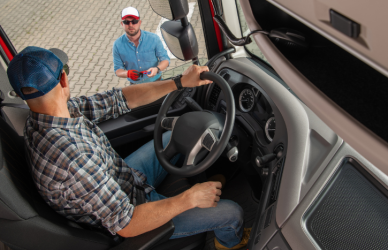The Commercial Vehicle Safety Alliance (CVSA) has rolled out updates to the out-of-service (OOS) criteria for 2024, incorporating 11 new conditions effective April 1. Kerri Wirachowsky, CVSA’s director of inspection programs, delved into the nuances of these new rules, shedding light on the intricate discussions between industry stakeholders, regulators, and enforcement agencies that shape the annual OOS guidelines. These guidelines aim to foster consistency in compliance and enforcement across North America.
Among the notable updates, Wirachowsky highlighted revisions concerning camshaft bushings in brake systems. While existing OOS criteria often covers braking defects resulting from worn camshaft bushings, the addition of specific language addresses instances where such wear may not manifest in obvious braking issues.
This was the result of “several situations during inspections where a missing bushing was discovered,” she said.
Notably, missing camshaft bushings are now included in the 20% criterion, constituting one defective brake.
“There were at least two incidents where the camshaft bushing was gone altogether, but due to how the camshaft jammed into the spider casting, the brakes weren’t really working but weren’t actually out of adjustment,” she said.
Addressing confusion surrounding the 20% criterion, CVSA introduced a simple yet effective solution: watermarking all relevant pages to distinguish them from general brake regulations.
Another significant addition stemmed from incidents involving trailer balls and mismatched hitches.
“We had a truck turn up at the scales, and I can’t believe the truck was still together,” Wirachowsky said. It was actually a semi pulling doubles, with the second trailer appearing to be connected by nothing more than hope. “The pintle hook on the back of the truck was there,” she said, but instead of the trailer properly coupled to the tractor, it was somehow “jammed underneath the bumper of the truck.”
The criteria now deems coupling a trailer ball marked with its size to an incorrect hitch as a violation, while worn trailer balls lacking size markings are exempt.
In a shift toward practicality, operating lights that are functional but not turned on at night no longer trigger an OOS violation. This decision, following a lengthy debate, accounts for scenarios where inspectors encounter trucks without illuminated lights before initiating inspections.
Regarding auto-inflation systems for tires, the focus remains on pressure loss in the tread area. While a leak in this region is deemed a violation, it won’t result in an OOS status unless pressure significantly drops. Instances where auto-inflation systems maintain pressure within acceptable limits do not lead to OOS designation unless pressure loss exceeds prescribed thresholds.
Looking ahead, increased scrutiny is anticipated for Drug and Alcohol Clearinghouse (DACH) checks and tractor protection controls during this year’s Roadcheck. Inspectors will also verify hazmat-endorsed drivers’ compliance with Transportation Security Administration (TSA) screenings, particularly in states where commercial driver’s licenses (CDLs) are valid for more than five years.
These updates reflect CVSA’s commitment to enhancing safety and regulatory clarity within the commercial vehicle industry, balancing practical considerations with stringent enforcement measures.
Source: Overdrive











